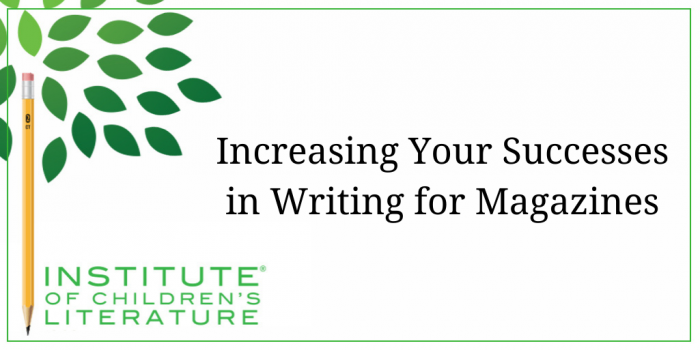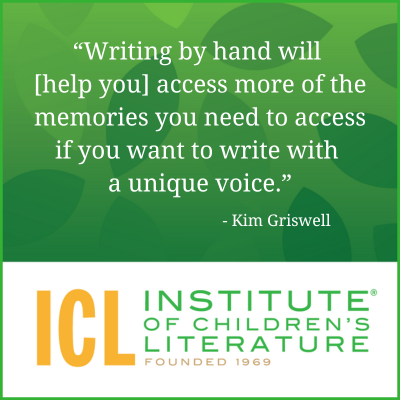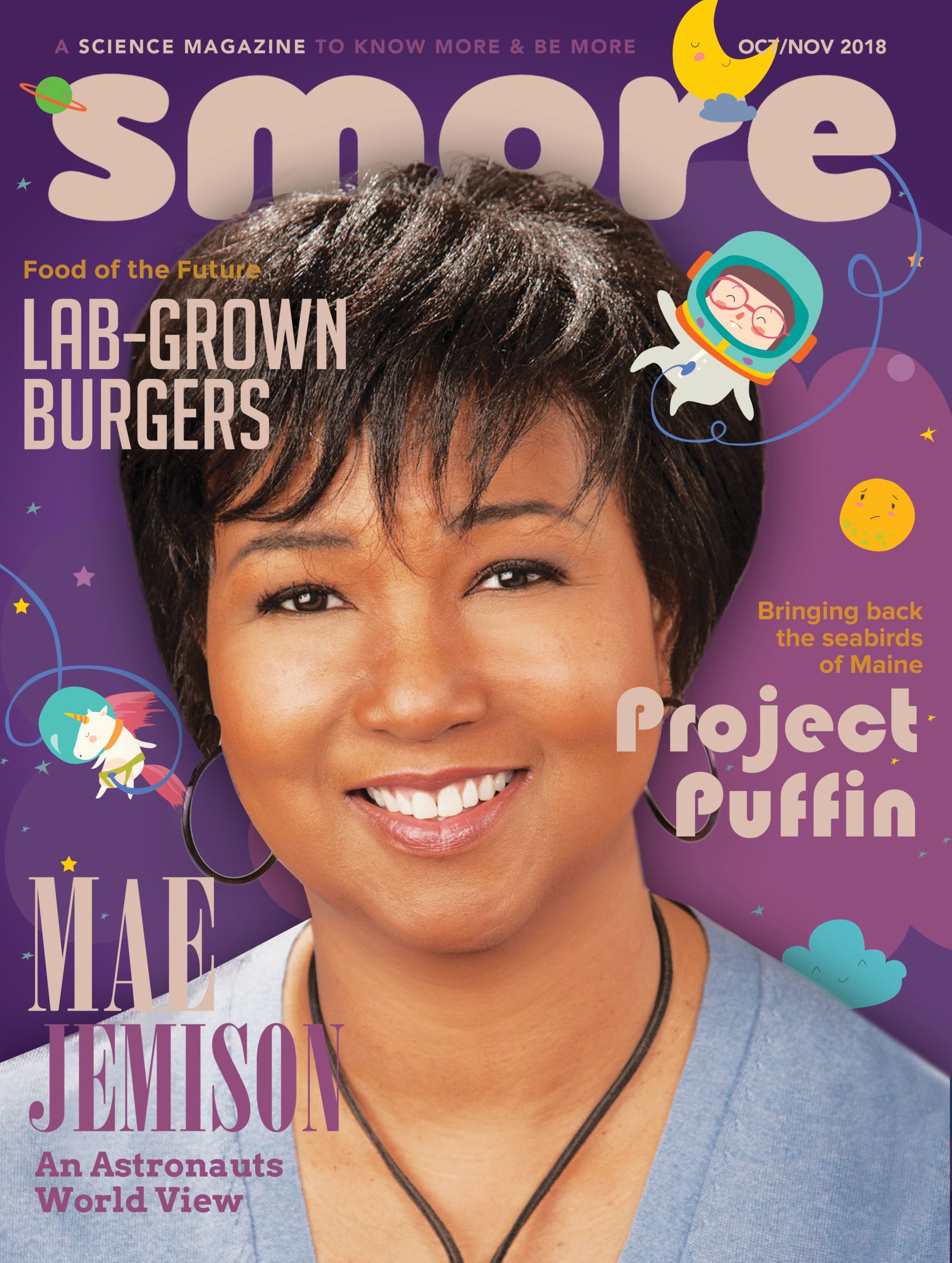1000 N. West Street #1200, Wilmington, DE 19801
© 2024 Direct Learning Systems, Inc. All rights reserved.

Magazine writing today can be challenging.
Basically you’re throwing yourself into a highly competitive field that really doesn’t get all the respect it deserves. But magazine writing can also be incredibly rewarding.
With small magazines, it can mean seeing your name in print far, far faster than in book publishing.
With large magazines, it can mean bringing a story to considerably more readers than the average book ever reaches.

I remember one of the first things I ever read in a children’s magazine. It was in an issue of Humpty Dumpty. It was a poem about Daylight Savings Time. And I was a so thrilled to be able to read the whole thing on my own, and amazed to think there were magazines that could come right to your house every month that were filled with stories and poems and information. I fell in love with magazines then, and I never really fell out.
But I’ll be the first to say that getting published in magazines isn’t always the easiest thing in the world. And often the first few sales can seem the hardest to come by. Once you break through and beginning selling, your confidence goes up, your knowledge goes up, and it all feels easier. But those first sales, they can be tough. Luckily, there are definitely things you can do to make it more likely that you’ll have success with your submissions. Let’s look at three.
This sounds really obvious, but the slush piles at many magazines make it clear that it isn’t quite as obvious as it seems. Magazines that publish only nonfiction will receive fiction submissions. Magazines that publish only very short stories will receive pieces with word counts that are double or even triple the allowed limit. So avoiding sending material that simply cannot be used is the best use of your time and theirs.

1. First, do a close reading on all the submission guidelines at the magazine. Many of us start with our market guides. You will definitely need a market guide so you can have a wider array of magazines to choose from. Otherwise we tend to be stuck considering only those magazines you might have noticed on your bookstore magazine rack or at your public library. So begin with the entry for the magazine in the market guide. Read it carefully. Notice exactly what they buy and what they do not. If the listing doesn’t mention poetry anywhere in it, it’s likely the magazine doesn’t buy poetry. If the listing says they only publish nonfiction, it’s not going to be the spot for your story about a talking turtle.
2. After you check out the market guide, check out the magazine’s submission guidelines (which are often online) and the magazine’s website. You can learn a lot about a magazine from their website. The website is the public face of the magazine. It’s the way the magazine tries to lure in readers by showing what they offer. And what they offer—that’s what you need to offer them. If they say they focus on character building, then so should you. If they say their content is “fun with a purpose,” then you best not forget the “fun” when you’re writing with purpose. Look, study, and ask yourself what this magazine or this website focuses on.
They’re trying to show you who they are, so a smart writer pays attention. Then you can find a market whose contents is a good fit with what you like to write. And you can write something to make them happy (and you too).
Do you want to begin making sales quicker? Write the things the magazine needs but doesn’t get often. For instance, many magazines publish crafts and activities, but they get far fewer submissions of those types of pieces than they get of talking animal stories. So your talking animal story is going to up against far stiffer competition than your activity where you made animal print coasters from recycled cereal boxes.
Magazines that publish both fiction and nonfiction get far more fiction submissions than nonfiction submissions. Look for the smaller features, the more “out of the way” opportunities and write those. Often the guidelines will tell you what they really want, don’t overlook those in favor of the items that seem more fun to you. So consider the crafts, the recipes, the puzzles, the features on admirable kids in your community. It could be your first sale just needs a tiny shift in your focus.
 Write with voice
Write with voiceEditors sometimes talk about the generic voice they find in submissions by newer writers. Sometimes that happens simply because new writers often haven’t yet found their voice, or because new writers don’t realize voice can be present in far more than fiction. Nonfiction can have voice. Even crafts can have voice.
The biggest way to inject voice in your writing is in word choice. Look for specific words that bring more to the piece. For instance, if you’re writing a story about a school-aged child who walks with his dog to speak to someone, look for ways to inject more personality into that movement. If the child is miserable, he might have trudged. If he’s cheery and wired, maybe he hopped and skipped. If he wanted to show how very cool he is, maybe he sauntered. And what about the dog? Was it a beagle? A terrier? A massive mix of Labrador, German Shepherd and bear? What kind of dog would that child have? How can you take your choices further to show more, say more, and use specific detail to create something unique that is said in your unique voice.
Make unexpected choices. Don’t always go with your first thought. And don’t overlook the value of humor. Readers love to be surprised and they love to be amused. If you’re offering something the reader will love, you’re offering something the editor is more likely to snap up. Then when you make that sale and the next one and the next one, you’ll be on your way to the writing life you desire.
With over 100 books in publication, Jan Fields writes both chapter books for children and mystery novels for adults. She’s also known for a variety of experiences teaching writing, from one session SCBWI events to lengthier Highlights Foundation workshops to these blog posts for the Institute of Children’s Literature. As a former ICL instructor, Jan enjoys equipping writers for success in whatever way she can.
1000 N. West Street #1200, Wilmington, DE 19801
© 2024 Direct Learning Systems, Inc. All rights reserved.
1000 N. West Street #1200, Wilmington, DE 19801
© 2024 Direct Learning Systems, Inc. All rights reserved.
1000 N. West Street #1200, Wilmington, DE 19801
© 2024 Direct Learning Systems, Inc. All rights reserved.
1000 N. West Street #1200, Wilmington, DE 19801
© 2024 Direct Learning Systems, Inc. All rights reserved.

1000 N. West Street #1200, Wilmington, DE 19801
© 2025 Direct Learning Systems, Inc. All rights reserved.

1000 N. West Street #1200, Wilmington, DE 19801
©2025 Direct Learning Systems, Inc. All rights reserved. Privacy Policy.
5 Comments